TikTok revolution: Why youth in Europe and US turning to radical politics
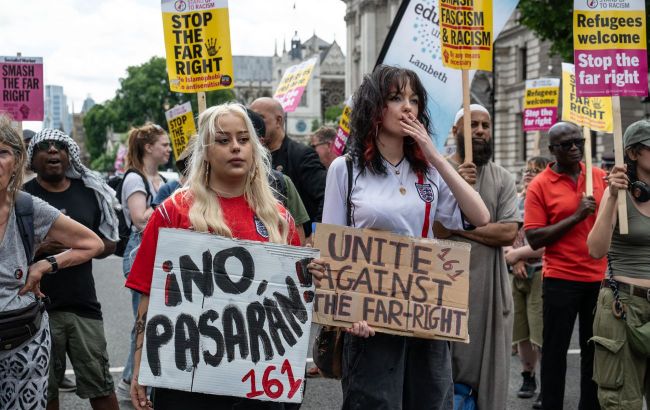 Youth protest in London (photo: Getty Images)
Youth protest in London (photo: Getty Images)
Why young people in the West support radical parties, what exactly European zoomers are dissatisfied with, and why young men are more inclined to right-wing radicalism – read in the RBC-Ukraine article below.
Key questions:
-
How did radicals become popular among young people in the West?
-
Why in some cases do young people vote for right-wing radicals, and in others – for ultra-left?
-
How do radicals mobilize youth to come to the elections?
-
Will Europeans vote for moderates when they grow up?
In the center of French Lyon on July 7 last year, about 2,500 young people gathered. They were celebrating the victory in the parliamentary elections of the left-wing bloc "New Popular Front." Some of the young people brought anti-fascist posters and chanted slogans "Contre le fascisme!" (Against fascism!).
At the same time, another rally was taking place in the city, far-right and somewhat smaller in scale. Supporters of the “National Rally” party, which until recently was led by Marine Le Pen, organized a counter-protest. The far-right tried to break through the police lines to the crowd of leftists. Both sides threw bottles, lit fireworks. Law enforcement used tear gas and water cannons. More than a dozen young men were detained.
Although this situation in Lyon was somewhat extreme, it was far from isolated. It shows that European youth still have the potential to be involved in active political participation.
Voting for the left in those elections was impressive – 48% of voters aged 18-24 and 38% in the 25-34 age group supported the “New Popular Front.” Of them, about 60% of votes went to its ultra-left part – the “Unbowed France” party. Meanwhile, the “National Rally” (RN) gained 33% of the votes among voters aged 18-24, and 32% in the 25-35 category.
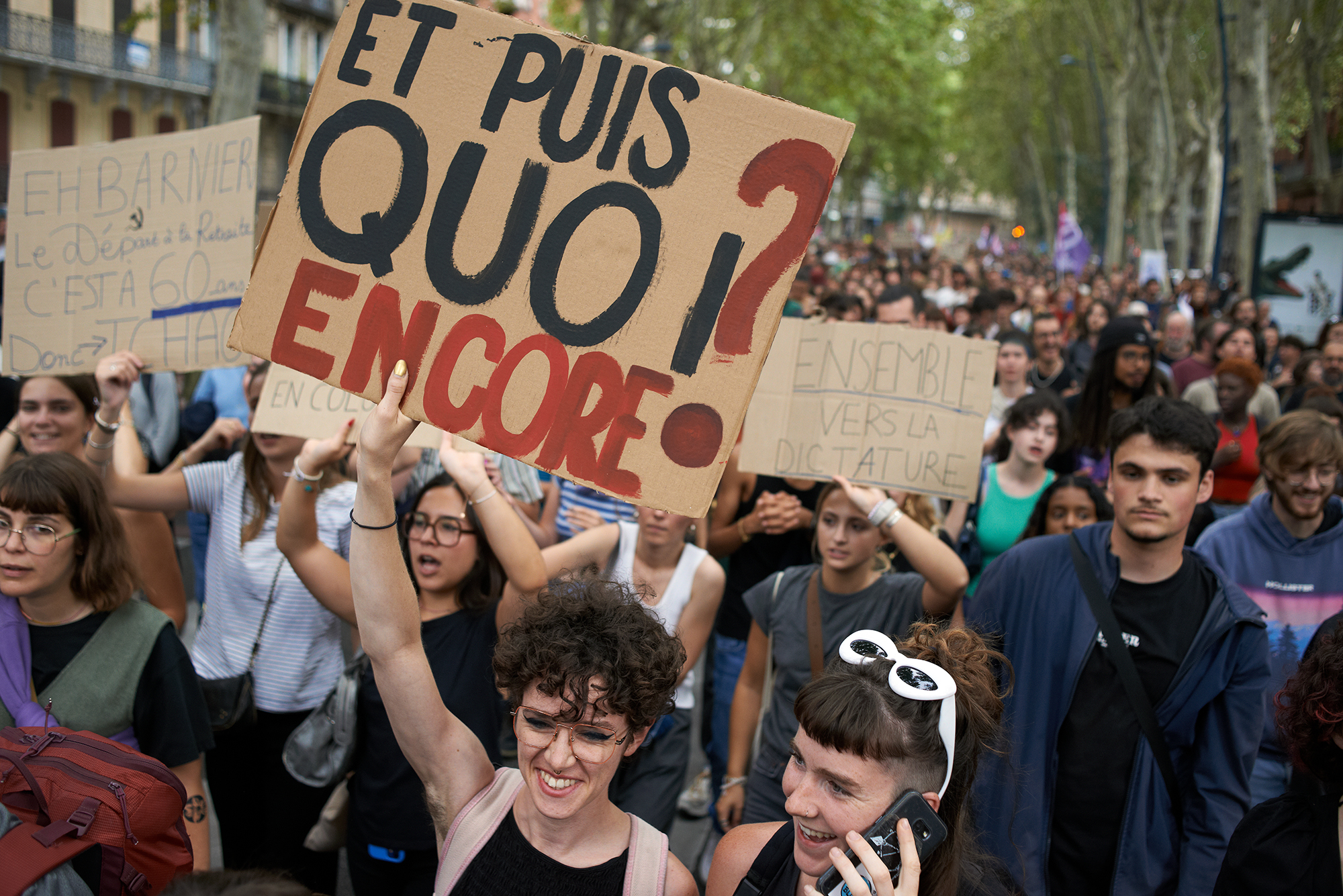
Youth rally in Toulouse, France (photo: Getty Images)
This was even more clearly manifested in the 2024 Romanian presidential elections, where young people massively and unexpectedly voted for Călin Georgescu, an independent far-right candidate. His total result – 22.9%, but he received 30% among voters aged 18-24 and 26% in the 25-34 age group.
In Poland, in this year’s presidential election, young people massively voted for the far-right Candidate. In the first round, he received 36.1% of the votes among voters aged 18-29, the most among all candidates. His total result was only 14.8%.
Similar trends are observed in several other European countries, as well as in the United States.
Youth as a political reserve
Although situations where young people massively support right-wing radicals attract more attention, this does not happen everywhere.
"We've seen a few elections where far-right parties did very well among young voters, sure, but there have been many other elections in which that wasn't the case, and those don't get as much media attention. So there are also plenty of elections still where far-right do not overperform among young people," said political scientist and psychologist, associate professor at Radboud University Nijmegen (Netherlands), Roderik Rekker, in a comment to RBC-Ukraine.
For example, in last year's European Parliament elections, left-wing and radically left-wing parties dominated among youth. Or in the parliamentary elections in Portugal, the radical left party Bloco de Esquerda (Left Bloc) received 4.4% of the vote, but among voters aged 18–34, as much as 15%.
According to Rekker, the far-right have approximately the same share of votes across all age groups, and the growth of these parties occurs “evenly.” Whereas the radical left indeed enjoys more popularity among youth.
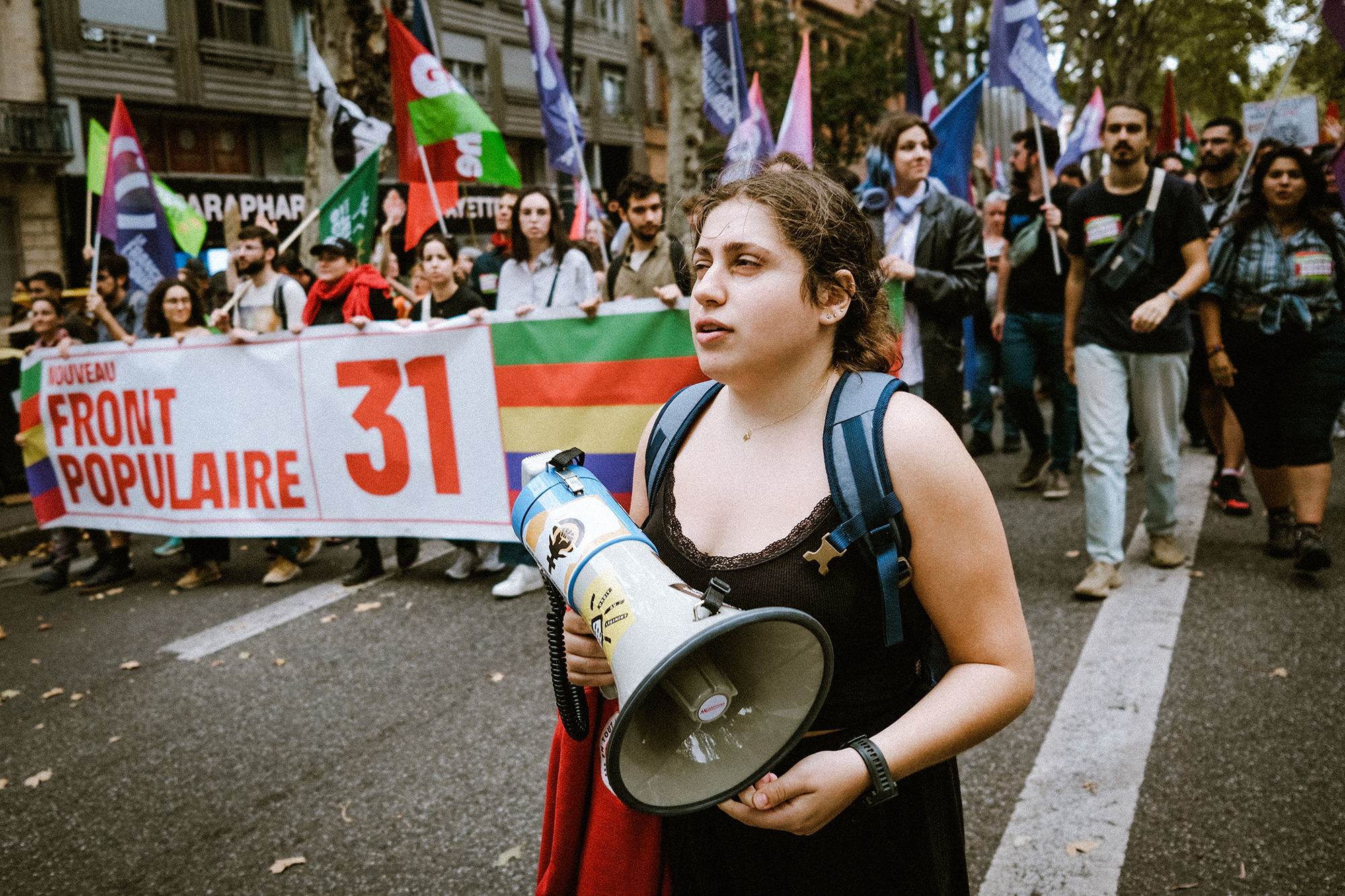
A rally of the New Popular Front in France (photo: Getty Images)
Although in the past these two political camps were opposed to each other, the far-right and far-left are now becoming increasingly similar, according to Stefano Braghiroli, associate professor of European studies at the University of Tartu (Estonia), as reported to RBC-Ukraine. In political science, this phenomenon is known as the "horseshoe effect."
"What makes them similar is not necessarily what they say, but who they oppose. I think that nowadays the common target of the far right and the radical left is normally or generally the liberal democratic consensus," noted Braghiroli. "When you look, for example, at satisfaction with democracy or when you look at satisfaction in how things are going, young people are the ones who have the lowest level of support. That's why they are more sensitive to the messages of parties that hit, let's say, this liberal democratic consensus."
According to him, young people feel that liberal democracy does not benefit them, and therefore, they are more open to supporting radical parties that challenge the status quo. Change—regardless of its nature—is perceived by young people as something positive.
The problems of youth are generally standard. Thus, a Eurobarometer survey from September to October last year showed that 38% of young EU citizens (under 34 years old) believe the EU should invest more in affordable housing and support for the cost of living. Next on their list of priorities are education, training, and acquiring new skills (29%), as well as mental health and well-being (28%).
"We live in an era in which things change very fast. This does not apply potentially to Bulgaria, Romania, or even to some extent, Poland. But if you say, for example, France, Germany, Italy, and so on, young people look at their parents, and their parents were the ones who were from a generation that was very safeguarded, with good jobs, relatively well paid, and somehow quite a lot of safety guarantees. And nowadays they find themselves in a precarious situation," Braghiroli told the media outlet.
Mobilizing passivity
The main issue of young voters is that they do not always go to vote, even if they show support for a particular party. So in some elections, their vote is very significant, and in others, it is barely noticeable. Interestingly, certain patterns emerge here.
"New parties do often better among young voters. So when a radical right party is new, they might do a little bit better among young voters. Also, you sometimes see that when a party is gaining a lot, it is really surging compared to the previous election. Then they gain a little bit more even among younger voters," Recker noted.
"But then, when they go down again in the next election, they also go down faster among younger voters because young voters switch their votes a bit more easily – they are not loyal to a particular party."
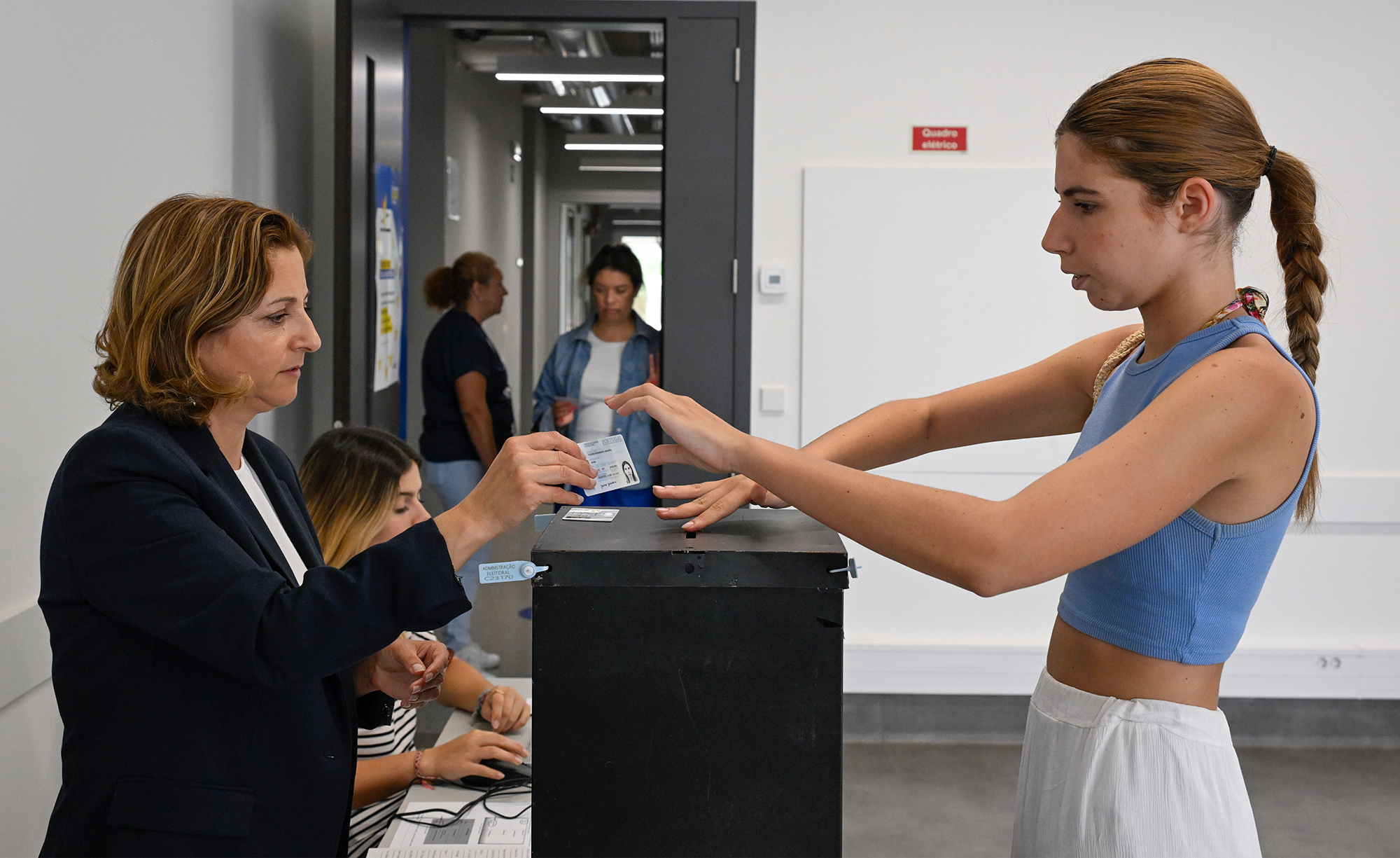
Voting in the elections to the European Parliament, 2024 (photo: Getty Images)
In such cases, the novelty effect is key. All the more so since populists use this message for campaigning. For youth – mostly through social networks.
Among the most successful in this regard is the leader of the National Rally in France, 29-year-old Jordan Bardella. One of his most successful strategies is to take interviews he gives elsewhere and post clips from them on TikTok. In addition, on his account with 2.2 million followers, there are many public speeches and moments from his personal life: from gym workouts to videos with pets.
"You take the TikTok of Bardella and you take the TikTok of Macron, except also because of the fact that Macron has an institutional position. And you will see that the language is absolutely different. The far right and the radical left are very good at having simple, straightforward and very direct messages," noted Braghiroli.
But perhaps the most telling case occurred during last year's presidential elections in Romania. Independent candidate Călin Georgescu actively ran his TikTok, posting videos where he visited a church, clearly aiming to create the image of a devout Christian, and also practiced judo and ran at the stadium. To make his TikTok videos reach a wider audience, he urged followers to share them and use hashtags with his name for promotion.
"In general, he did something incredible – mobilized youth to come to the elections, because youth, in principle, not that they previously voted for this or that – no. They just participated in elections less," media expert and director of the NGO Detector Media, Halyna Petrenko, explained to RBC-Ukraine.
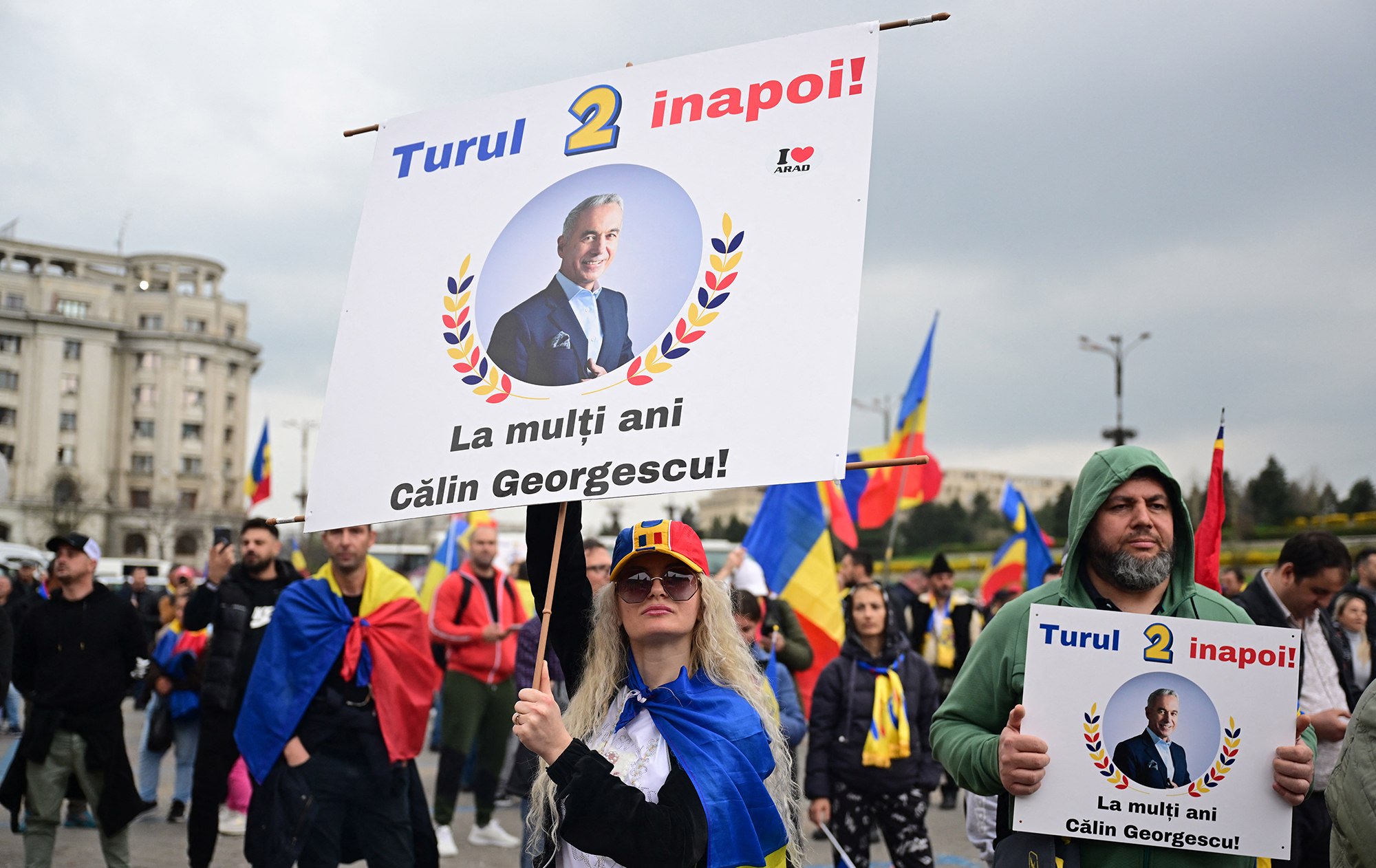
Rally of Călin Georgescu's supporters in Romania (photo: Getty Images)
At the same time, Romanian special services recorded a Russian trace and external assistance to the politician, through the use of TikTok algorithms to increase the popularity of his videos. This later became grounds for canceling the first round of elections, and later, Georgescu was detained and removed from the elections.
As RBC-Ukraine wrote, the relationships of European radicals with Russia are multifaceted and complex. The Kremlin regularly helps some of them, but not all. Another part of radical parties clearly supports Ukraine, mostly in the countries of Central and Eastern Europe. But in any case, the rise in the weight of radicals is based on the use of internal problems.
"Russia simply looks for those problematic points that exist in societies, discontent with something, rational, irrational, it further inflames them, and this helps bring to power politicians who can further destabilize European unity, hinder Ukraine's accession to the European Union, and so on," said Petrenko.
Youth – different
Why is one part of the youth ready to support radical leftists, and another – the far right? According to Braghiroli, there is a certain correlation between education and place of residence, although there are exceptions. Youth with a lower level of education, who come, for example, from working-class neighborhoods, are more inclined to support conservative political forces, traditional values, and the idea of returning to a "mythical past."
"On the other hand, if you still have a very high level of insecurity, but a higher level of education, maybe a more central and more urban location instead of a countryside location, there is more possibility of support for either progressive parties or far left or radical left parties," Braghiroli said.
Another important point is gender differences. Among youth, a significantly higher percentage of men support far-right parties. This is again related to the feeling of insecurity.
"Imagine, again, you have a young person with an unstable job, underpaid, maybe you have barely the money to rent a flat, and so on. And then, there is also another thing, the sense that in the past, by being a young man, you could take certain things for granted. it was easier to get a job. It was somehow easier to find a good position. Maybe you have your father, who had a very good position, while your mom was working at home. And now you have, obviously, a distorted perception that young women, along with migrants, along with all the others, are basically taking away what was yours," Braghiroli emphasized in an interview with the media outlet.

Protest against arms sales to Israel, London (photo: Getty Images)
In addition, there is an element of so-called threatened masculinity. "In a sense, like I'm a man, I should somehow have a certain sort of rights attached to that. But that's because of where the society has gone, where basically everyone is more important than I. Young women, LGBT, and so on. I'm the last in the queue," the expert added.
This phenomenon is noticeable, for example, in the popularity of so-called "menfluencers" who create content focused on traditionally "masculine" topics such as style, fitness, technology, cars, finance, motivation, or lifestyle (although not exclusively) and speak about the "lost space for white men." Perhaps the most well-known example here is Elon Musk.
At the same time, when it comes to the leaders that youth look up to, things are not so clear. Some radical parties indeed work through their "young" leaders who appear as "improved and successful" role models for youth. The most striking examples are the likes of Jordan Bardella in France and Sławomir Mentzen in Poland, to some extent, the left-wing radical Alexandria Ocasio-Cortez in the USA.
But there have also been examples where youth support much older politicians. Among them are the leftists Jeremy Corbyn in the United Kingdom and Bernie Sanders in the USA, who is a true idol for many Americans who, by age, could be not just his grandchildren but great-grandchildren. There is no universal explanation for this, but the key here is the opposition of these leaders to the political system and their image as "rebels."
Response of the "old" establishment
All this means additional troubles for traditional parties that have been in power for years – the center-left social democrats, center-right Christian democrats, as well as liberals.
From personal experience, Roderick Recker confirmed that these political forces do pay attention to youth policy. At the same time, youth is not always a priority – in the short term, it is sometimes easier to work with the older electorate, because it is still sufficient to remain in power.
"Europe, like Ukraine, has an aging population. So, most voters are over the age of 40 in most European countries. It's still also attractive for center parties to just gain a lot of votes from these older vote groups, because overall, young voters are a relatively smaller group within the population," Recker told the media outlet.
Nevertheless, there are also successful cases when youth sided precisely with the "old" parties. A striking example here is the Social Democrats in Denmark. The party, led by Mette Frederiksen, decisively addressed the issue of illegal migration, yielding positive results.
"There has to be a good balance. The mainstream party needs to have a recipe which, on the one hand, is perceived to work and, on the other hand, doesn't look like a bad copycat of the proposal of the far right," Braghiroli emphasized.
In the case of the Social Democrats, part of the voters support tougher measures on migration, but excessively strict policy may alienate progressive voters who previously voted for them. So it's necessary to weigh carefully: will more voters be gained than lost?
***
"If you're not a socialist at 20, you have no heart; if you're still a socialist at 40, you have no brain," such a phrase is attributed to British Prime Minister Winston Churchill.
In the past, it really was that way. As youth aged, they drifted away from radicals and voted for more moderate and responsible political forces. But these trends are characteristic of liberal democracies in times of stability, and that is exactly what is disappearing against the backdrop of economic difficulties in Europe and the Russian threat.
Additional confusion is added by the information sphere–it is more fluid, open, and ungovernable than the pre-Internet era. Moreover, the algorithms of social networks are arranged in such a way that they encourage the creation of "bubbles of like-minded people," which gradually amplify the radicalism of their members.

Youth rally in Glasgow, United Kingdom (photo: Getty Images)
Although now in Europe, the share of youth is smaller than before, due to disappointing demographic trends. Still, it will remain active for at least several decades. Meanwhile, older voters are gradually leaving participation in political processes, for natural reasons.
As a result, much depends on the ability of mainstream parties to handle the problems that worry society. Otherwise, Western countries face major problems.
"I know that this sounds a bit patronizing, but if you look at older generations, older generations know what the risks of letting democracy go are, either because they were living in an authoritarian regime before or because, maybe, their grandparents told them about the war and so on and so forth. If, for example, democracy goes bad, then they are facing what kind of risks they are facing. Younger people, to some extent, don't have this antibody," Braghiroli concluded.
And several recent elections in Europe indicate that such awareness is still partially present among young people. However, the "old" parties cannot afford to turn a blind eye to the threats that the spread of radical ideas among young people poses to democracy. Both from the left and the right.
Sources: data from the Eurobarometer sociological survey, materials from Politico Europe, Le Figaro, BBC, FAZ, and comments by Stefano Braghiroli, Roderick Recker, and Halyna Petrenko were used.

